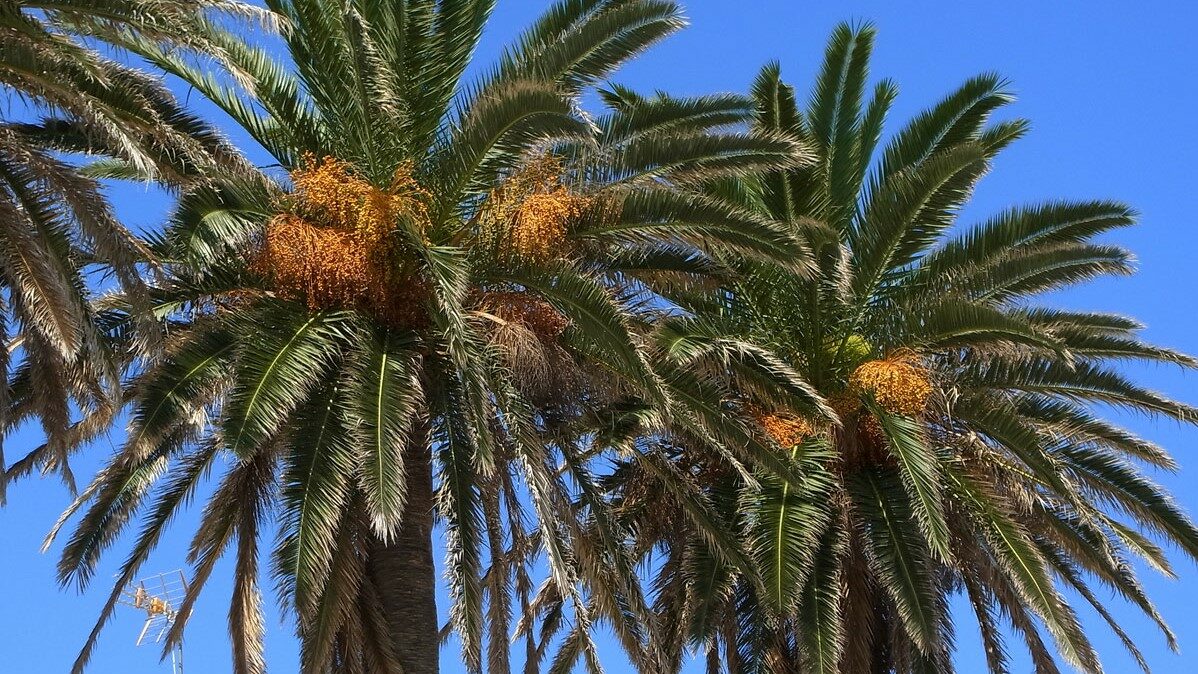WHAT IS A PALM
‘Palm’ is a term commonly used to describe a plant that carries a cluster of large leaves at the top of an unbranched stem or trunk. This is sometimes known as a head or crown. A true palm is actually from the Palmae or Arecaceae family. This family has over 200 genera and about 2800 species, mostly growing in warm areas of the world. Palms are often considered exotic and associated with desert places, but some palms are happy in the English climate, especially on the southern coast.
SIZE AND SPACE
SPECIFIC NEEDS
Different palms require a wide variety of conditions. In addition to sun requirements are soil type, preferred temperatures, wind, water and the site itself. The majority of palms are happiest in warm, wet conditions, but there are a few that have evolved to cope with very dry areas. These are the species that can also withstand a certain amount of frost. It’s also possible to keep more tender palms over the winter in containers.
PALMS TO SURVIVE WINTER
- Trachycarpus fortunei (Chusan/Chinese Windmill Palm): an excellent choice for a specimen tree but small enough to be grown in restricted areas. Large fan-shaped leaved are borne at the top of a thick trunk. Grow in well-drained, fertile soil in full sun or light dappled shade, sheltered from strong or cold drying winds. 12m+.
- Chamaerops humilis (Dwarf Fan Palm): forms clumps of fan-shaped leaves, up to 2m. Wind resistant, will tolerate -12°C or lower. Suitable for heavier clay soils and partial shade.
- Brahea armata (Blue Fan Palm/Hesper Palm): 15m with a top spread of 2.5m. The leaves are pale silvery blue with creamy-coloured flowers. It has an erect habit with the trunk clothed in fibrous leaf bases. Young specimens won’t tolerate frost.
- Butia capitata (Jelly Palm): 4-6m with a heavy trunk, patterned with the stubs of old leaves. Has feathery, grey-green arching leaves, with very small flowers and yellow/red edible fruits. It prefers sun or light shade and average water, but is also suitable for heavier clay soils, so is an excellent choice for the garden.
- Jubaea chilensis (Chilean Wine Palm): a fat trunk patterned with scars of leaf bases. The leaves are up to 5m long and feathery. Slow growing to 25m, half-hardy. Outdoors grow in fertile, moist but well-drained soil in full sun. It will need regular watering during very dry summers until well established.
- Livistona australis (Australian Fan Palm): a large palm with an erect, robust trunk that is initially covered with a skirt of dead leaves and rough or prickly fibres. Long, spiny leaf stalks support longer, lustrous, deep green blades. From spring to summer, cream flowers are produced in leaf-length panicles, followed by brownish-red to black fruit.
- Phoenix canariensis (Canary Island Date Palm): a large heavy-trunked plant growing to 20m+, with a 15m spread composed of many great arching, graceful fronds. This date palm grows slowly until it has fully formed the trunk. It will grow happily in a pot for many years, with a similar appearance to a pineapple. Will stand low temperatures, but if subject to severe frost damage will take some time to develop a new foliage head.
- Cordyline australis (Cabbage Palm): although resembling a palm, is a member of the Agavaceae family. It is erect and branches sparsely with age. In growth water moderately and apply a balanced liquid fertiliser monthly. In frost-prone areas grow as a houseplant or in a greenhouse.
- Sabal minor (Dwarf Palmetto): a leafy, green palm, usually trunkless, but sometimes with a trunk to 2m. The old leaves fold at the base and hang down, giving the appearance of a folded umbrella.
- Sabal palmetto (Cabbage Palm/Common Palmetto): a large palm with a rough trunk to 60cm diameter. Bears compact, spherical heads of many fan-shaped, rich green leaves to 2m long. Cream flowers are borne in panicles just longer than the leaves.











